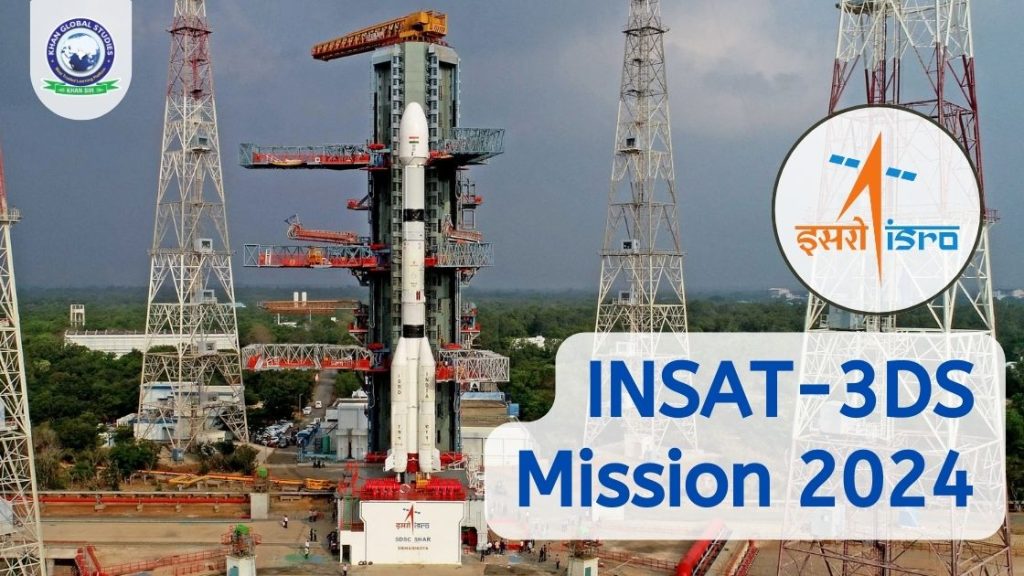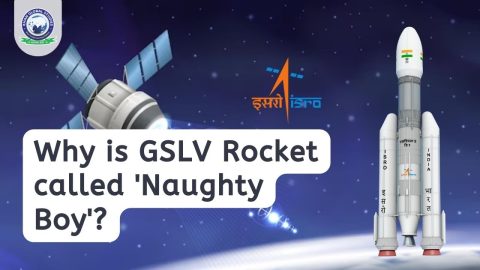The Indian Space Research Organization (ISRO) is preparing to launch its weather satellite INSAT-3DS on the GSLV F14 spacecraft. The satellite will be launched from Sriharikota Spaceport on 17th Feb 2024 at 5.35 pm. INSAT-3DS is the follow-up mission to the third-generation weather satellite from geostationary orbit.
Satellite Features
The GSLV F14 mission, in its 16th launch, is to deploy the INSAT-3DS weather satellite into the Geosynchronous Transfer Orbit (GTO). Subsequent orbit-raising procedures will place the satellite in geostationary orbit.
Ministry of Earth Sciences (MoES) Contribution
The INSAT-3DS satellite mission is completely funded by the Ministry of Earth Sciences (MoES) and is designed for advanced meteorological observations. It will monitor land and ocean surfaces for weather prediction and disaster warning, enhancing the services provided by the operational INSAT-3D and INSAT-3DR satellites.
Indian industries have played an important role in manufacturing the satellite, highlighting the country’s indigenous space capabilities. Various departments of the Ministry of Earth Sciences, such as the India Meteorological Department (IMD) and the National Center for Medium-Range Weather Forecasting (NCMRWF), will use INSAT-3DS satellite data to provide better weather forecasting and meteorological services.
Mission Objectives
The primary objective of the INSAT-3DS mission is to monitor the Earth’s surface, conduct ocean observations and analyze the environment in various spectral channels of meteorological importance. It will provide vertical profiles of various meteorological parameters of the atmosphere, aiding in better weather forecasts.
Additionally, the satellite will provide data collection and data dissemination capabilities from Data Collection Platforms (DCPs) and satellite-assisted search and rescue services.
Before the mission launch, ISRO Chairman S Somnath offered prayers at Sri Chengalamma Temple in Sullurpet, Andhra Pradesh. He said, “We have today launched a GSLV rocket carrying a meteorological satellite – INSAT-3DS for weather climate studies. This satellite is built for the Ministry of Earth Sciences. It is the third satellite in the INSAT series of satellites.”
Importance of Mission
INSAT-3DS, weighing 2,274 kg with a mission life of 10 years, will take over the functions of INSAT-3D (launched in 2013) and INSAT-3DR (launched in September 2016), which have come to the end of their mission lives. It will provide advanced weather observations of both land and ocean surfaces, aid in short-range forecasts of extreme weather events, provide visibility estimates for aviation, and study wildfires, smoke, snow cover, and climate.
Challenges and Future Missions
The GSLV-F14 mission affectionately nicknamed the “naughty boy“ for its spotty record, is the rocket’s 16th mission overall and its 10th flight using the indigenously developed cryogenic engine, increasing the pressure for success.
GSLV is scheduled to launch later this year carrying an Earth observation satellite, NISAR, which is being jointly developed by NASA and ISRO. NISAR will map the entire globe over 12 days, providing continuous data to understand changes in Earth’s ecosystems, ice mass, sea level rise, and natural hazards such as Earthquakes and Tsunamis.






